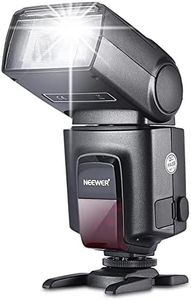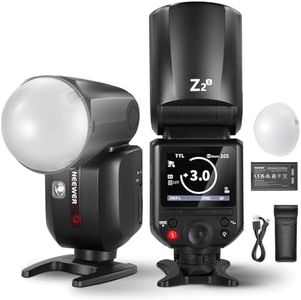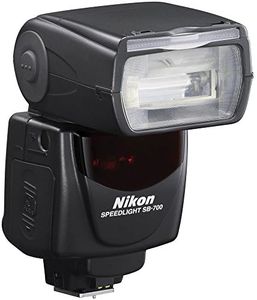We Use CookiesWe use cookies to enhance the security, performance,
functionality and for analytical and promotional activities. By continuing to browse this site you
are agreeing to our privacy policy
10 Best Camera Flashes
From leading brands and best sellers available on the web.By clicking on a link to a third party's website, log data is shared with that third party.
Buying Guide for the Best Camera Flashes
Choosing the right camera flash can make a huge difference in your photography, whether you're shooting portraits, events, or products. A good understanding of flash types and key features will help you find a fit that matches your camera, shooting style, and goals. The best approach is to think about where and how you'll use the flash most often and which features will let you capture the images you want. By knowing what each spec means and how it affects your photos, you'll feel confident picking a flash that grows with your needs.Guide Number (GN)The guide number is a measure of a flash’s overall power, telling you how far it can illuminate a subject at a given ISO. A higher guide number means the flash can light up subjects farther away. Values are usually given in meters or feet. Guide numbers can be divided roughly into low, medium, and high: lower guide numbers suit close-up and indoor use, mid-range are versatile for various scenarios, and high guide numbers are great for big spaces, outdoor events, or bouncing light off ceilings and walls. If you mostly shoot indoors or product photography, a modest GN may be fine, but for events or large group photos, picking a flash with a higher guide number gives you more flexibility.
Recycle TimeRecycle time tells you how long a flash takes to recharge after firing before it’s ready to flash again. Faster recycle times, usually a couple of seconds or less, help when you need to take shots in quick succession, such as at events or with moving subjects. Recycle times are slower on budget models and quicker on advanced ones. If you need to shoot bursts or anticipate fast action, choose a flash with short recycle times so you don’t miss important moments.
Flash Head MovementThis refers to whether and how much you can swivel or tilt the flash head. A movable head lets you bounce the flash off ceilings or walls, creating softer and more flattering light. Some flashes offer only up or down tilt, while others provide full rotation. If your subjects are mostly stationary and you shoot straightforward photos, fixed heads might suffice, but for creative lighting and avoiding harsh shadows, a flash with flexible head movement is a better choice.
TTL (Through-The-Lens) MeteringTTL is an automatic feature that lets your camera and flash work together to set the correct light output based on the scene. With TTL, you don’t have to manually adjust flash power for each shot. Some flashes are manual-only, while others support TTL for convenience. If you’d like the camera to handle exposure or if you shoot in changing lighting conditions, pick a flash with TTL—if you like full control and consistency, a manual-only flash might be suitable.
Wireless ControlWireless control covers the ability to trigger and adjust the flash remotely, either via built-in radio systems or optical signals. With wireless capability, you can place the flash off-camera for more creative lighting setups or use multiple flashes at once for professional looks. Simple flashes may not offer this, while more advanced ones include both triggering and the ability to work as a controller or slave in multi-flash arrangements. If you see yourself experimenting with lighting setups beyond simple on-camera use, consider flashes with wireless options.
Battery Type and LifeDifferent flashes use various power sources, including AA batteries, proprietary rechargeable packs, or built-in cells. Battery type affects weight, convenience, and how long you can shoot before swapping or recharging. Flashes that use AA batteries can be quickly refueled during events, while proprietary batteries may last longer but require special chargers. If you shoot long sessions or events, look for flashes with longer battery life or options for battery packs to reduce interruptions.














